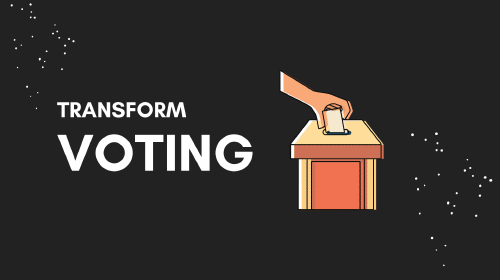Common Myths About Cybersecurity Debunked
Salomon Kisters
Jun 21, 2023This post may contain affiliate links. If you use these links to buy something we may earn a commission. Thanks!
In this digital age, cybersecurity has become an essential topic that everyone should be knowledgeable about. However, there are still many misconceptions and myths surrounding this important issue.
Some people think that they are too small to be targeted by cybercriminals, while others believe that antivirus software alone can protect them from online threats.
In this blog post, we will explore and debunk common myths about cybersecurity to help you better understand the risks and the best practices for staying safe online. Whether you are a business owner, a student, or simply an internet user, this post is for you.
So, let’s dive in and separate fact from fiction in the world of cybersecurity.
Myth 1: Cybersecurity is only important for large corporations
Many people believe that cybercriminals only go after large corporations with deep pockets. However, this is far from the truth. In fact, small businesses and individuals are often targeted because they have weaker security measures in place. Hackers can easily exploit vulnerabilities in your system to steal sensitive data such as credit card information, passwords, and personal details. Small businesses are especially vulnerable because they often lack the resources to implement top-notch cybersecurity measures.
Furthermore, cyber attacks can have a devastating impact on individuals as well. Personal information such as social security numbers, bank account details, and medical records can be sold on the dark web and lead to identity theft, financial loss, and reputational damage.
In short, cybersecurity is important for everyone, regardless of the size of the organization or the individual. Anyone who uses a computer or a smartphone or is connected to the internet is vulnerable to cyber threats. Therefore, it is essential to take cybersecurity seriously and be proactive in adopting best practices to protect yourself and your business from cyber-attacks.
Myth 2: Antivirus software is enough to protect against all cyber threats
It’s a common misconception that installing antivirus software is enough to protect your computer from all cyber threats. Although antivirus software can be effective against known viruses and malware, it cannot protect against all types of cyber attacks.
Hackers are constantly evolving their techniques to evade detection and bypass antivirus software. They use sophisticated methods such as social engineering, phishing, and ransomware to gain unauthorized access to your computer system and steal sensitive information.
Moreover, antivirus software alone cannot protect you from human error. It cannot prevent you from clicking on a malicious link or downloading a file that contains malware. It also cannot protect you from zero-day exploits, which are newly discovered vulnerabilities that hackers can exploit before antivirus software developers have had time to create a patch.
Therefore, it’s important to adopt a layered approach to cybersecurity. In addition to antivirus software, using a firewall, regularly updating your software, and using strong passwords can all help to protect your computer system from cyber threats. Educating yourself and your employees about cybersecurity best practices is also crucial in preventing cyber attacks.
Myth 3: My passwords are strong enough to prevent hacking
Many people believe that having a strong password is enough to prevent their accounts from being hacked. However, this is not entirely true. While having a strong password can definitely make it harder for hackers to gain access to your account, it is not a foolproof method.
Firstly, many people tend to use the same password or a variation of it across all their accounts. This can make it easier for hackers to crack your password and gain access to all your accounts. Additionally, hackers are becoming more and more sophisticated in their methods of cracking passwords. They use techniques such as guesswork, brute force attacks and social engineering to crack passwords and gain access to accounts.
Moreover, those who believe that having two-factor authentication enabled in combination with a strong password will make their accounts completely secure are again mistaken. While two-factor authentication can add an extra layer of security to your accounts, it is not impenetrable. Hackers can use methods such as phishing attacks to trick you into providing the second factor of authentication, thus bypassing the extra layer of security.
It is important to remember that passwords are just one piece of the puzzle when it comes to securing your online accounts. It’s critical to use different passwords for each account, keep them long and complex and update them regularly. Using a password manager can be helpful in generating and securely storing complex passwords. Additionally, regularly monitoring your accounts for suspicious activity and being vigilant while browsing the web can also go a long way in preventing cyber attacks.
Myth 4: Cybersecurity is solely the responsibility of the IT department
Many employees believe that cybersecurity is something that only the IT department needs to worry about. They think that as long as they follow the basic rules such as not clicking on suspicious links, they are not responsible for ensuring the security of their company’s data and assets. However, this couldn’t be further from the truth.
The truth of the matter is that cybersecurity is a shared responsibility. Every employee in an organization has a vital role to play in safeguarding the company’s data and assets from cyber-attacks. This is because cybercriminals are constantly looking for new ways to breach a company’s defenses and steal sensitive data. They often do this by exploiting vulnerabilities in employees’ behavior, such as using weak passwords or falling for phishing scams.
Therefore, it’s important for every employee to become cyber-aware and take responsibility for his or her actions. This can be done by attending cybersecurity training sessions provided by the organization, keeping software up-to-date, avoiding risky online behavior, and reporting any suspicious activity to the IT department.
A culture of cybersecurity needs to be established in every organization where employees take responsibility for their actions and understand the crucial role they play in protecting their company’s data and assets.
Myth 5: Cyber attacks are easy to detect and report
Many people assume that detecting cyber attacks is easy, and once detected, reporting them to the IT department is a straightforward process. Unfortunately, this is far from reality. Cyber attacks are becoming increasingly sophisticated, and attackers are constantly finding new ways to bypass traditional security measures. As a result, it can be challenging to detect an attack, let alone report it to the right people.
Furthermore, many employees may not even realize that they have been hacked or that their system has become compromised. Cyber attacks can occur in stealth mode, and attackers can remain undetected for prolonged periods, making it difficult to take action or report the breach in a timely manner.
Once a cyber attack has been discovered, reporting it to the IT department is not always straightforward either. There could be a lack of clarity about the channels to use or a fear of repercussions in reporting the breach, leading some employees to remain silent or even cover up the incident.
Cybersecurity requires a collective effort, and the responsibility for reporting an attack should not rest solely on one individual. Instead, everyone in the organization should be aware of the proper channels for reporting incidents and work together to ensure proper measures are put in place to prevent future attacks.
Conclusion
In today’s fast-paced and digitally connected world, cybersecurity should be a top priority for individuals and organizations alike. Ignoring the potential threats posed by cyber-attacks or assuming that one is immune to such risks is a recipe for disaster. The consequences of a successful cyber attack can be dire, ranging from loss of personal or corporate data to reputational damage and financial losses.
Therefore, it is crucial to take cybersecurity seriously and adopt proactive measures to prevent attacks from happening. This includes implementing strong passwords, using two-factor authentication, keeping all software and security systems up to date, and regularly backing up essential data.
Staying informed on the latest security practices is also essential in today’s ever-evolving threat landscape. Cyber attackers are constantly developing new techniques and exploits to penetrate systems and networks, and it is essential to stay up to date with the latest trends and defenses. This can be achieved by subscribing to cybersecurity newsletters, attending industry conferences, and investing in regular employee training!
Stay informed with the latest insights in Crypto, Blockchain, and Cyber-Security! Subscribe to our newsletter now to receive exclusive updates, expert analyses, and current developments directly to your inbox. Don't miss the opportunity to expand your knowledge and stay up-to-date.
Love what you're reading? Subscribe for top stories in Crypto, Blockchain, and Cyber-Security. Stay informed with exclusive updates.
Please note that the Content may have been generated with the Help of AI. The editorial content of OriginStamp AG does not constitute a recommendation for investment or purchase advice. In principle, an investment can also lead to a total loss. Therefore, please seek advice before making an investment decision.

Top 4 Ways to Back Up Your Crypto Wallet
In this article, we will be discussing the top 4 ways to back up your crypto wallet and ensure that your hard-earned money stays safe and secure. From cold storage to hardware wallets and encryption, we’ve got you covered.

How Blockchain Voting Systems Transform the Way We Vote
Guaranteeing secure and transparent elections nowadays is almost impossible. Find out how Blockchain Voting Systems can make the voting process more transparent

What Can You Buy with Bitcoin? Explore the Possibilities
Discover a wide range of services and items you can buy with Bitcoin, from cars and insurance to jewelry, news subscriptions, e-commerce products, tech services, travel bookings, and charitable donations.
Protect your documents
Your gateway to unforgeable data. Imprint the authenticity of your information with our blockchain timestamp